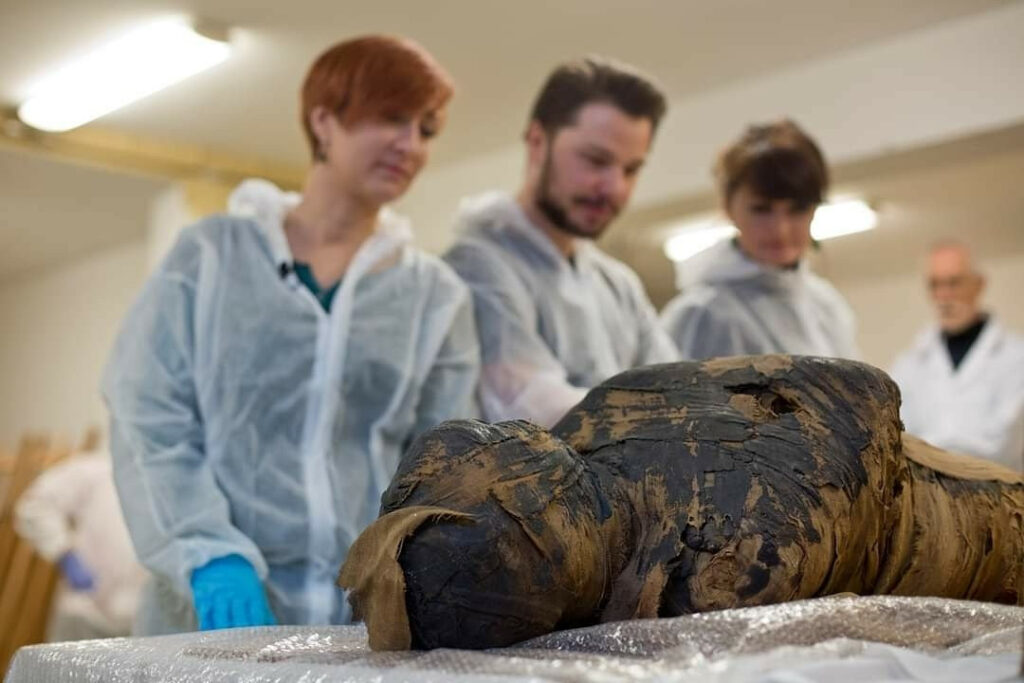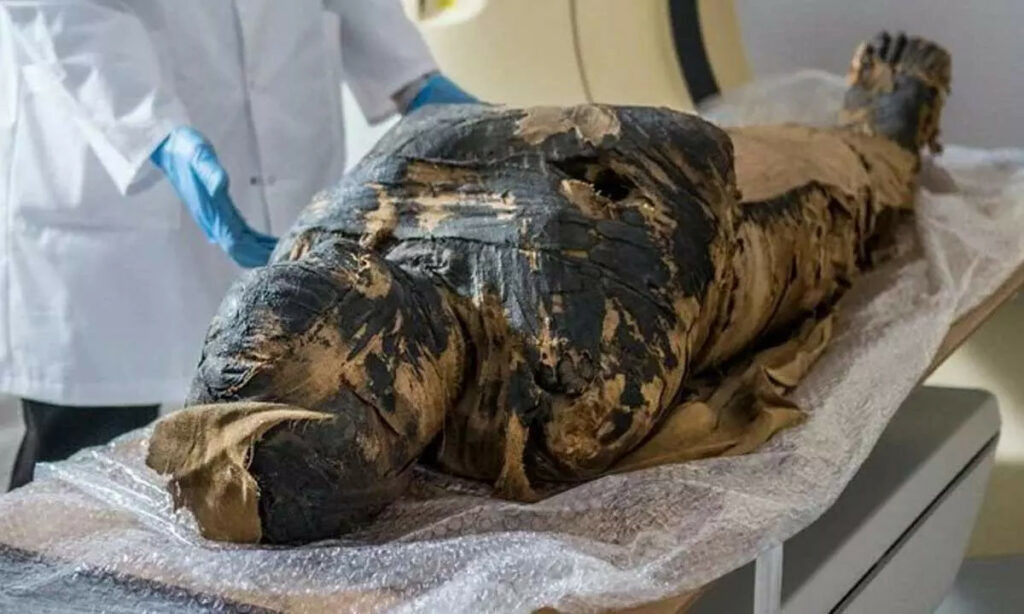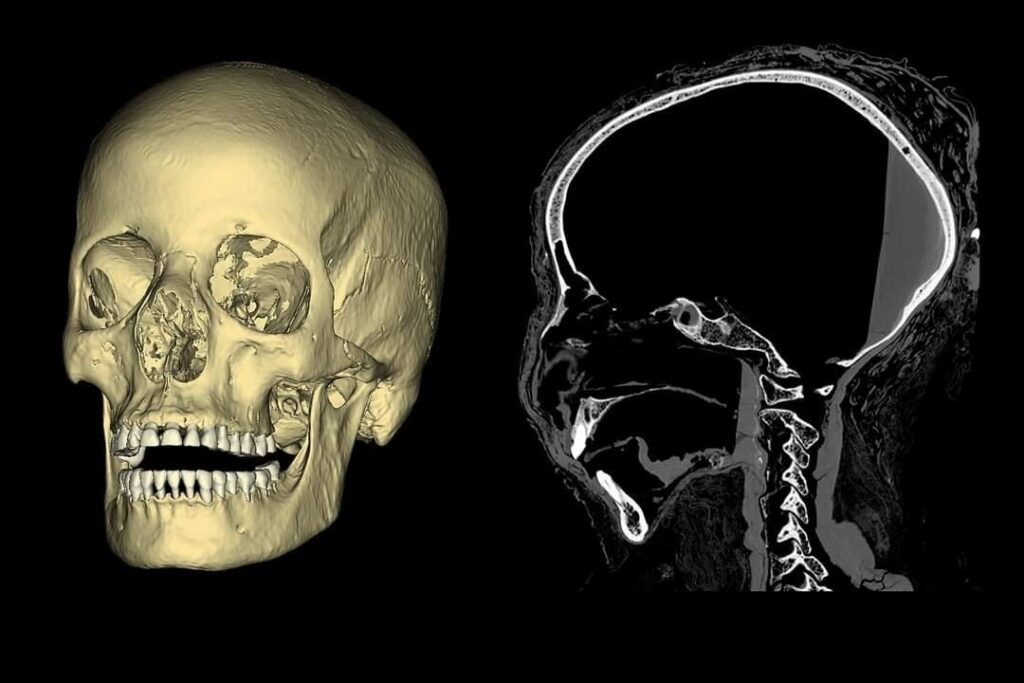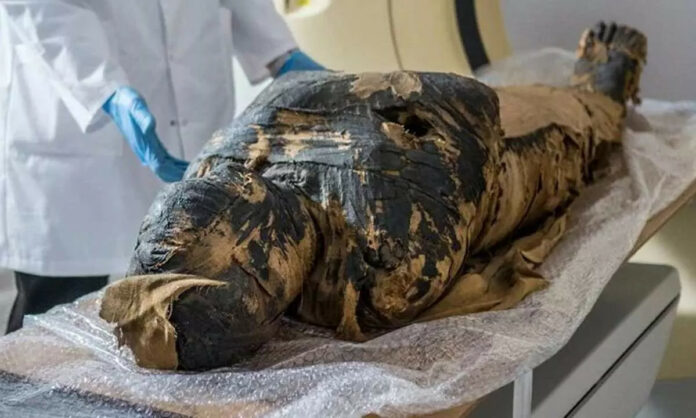In a groundbreaking study conducted by the Warsaw Mummy Project in Poland, researchers have uncovered that the world’s first known pregnant ancient Egyptian mummy, nicknamed the “Mysterious Lady,” may have succumbed to a rare form of cancer.

Discovery of the Mummy
The mummy, which dates back to the first century B.C. during the reign of Queen Cleopatra, was discovered in the early 1800s in the royal tombs of Thebes, an important trading post in Upper Egypt. In 1826, the mummy was transported to Warsaw, Poland, around the time of significant discoveries in the Egyptian Valley of the Kings. Since 1917, the University of Warsaw has loaned the mummy to the National Museum in Warsaw, where it is exhibited alongside its sarcophagus in the Ancient Art Gallery.

Revelations from Tomographic Imaging
An examination using tomographic imaging last year revealed that the “Mysterious Lady” was between 20 and 30 years old at the time of her death and was in the 26th to 30th week of pregnancy. The mummy had been meticulously wrapped in fabrics and buried with numerous amulets to ensure her comfort in the afterlife with her unborn child.

Evidence of Rare Cancer
A more recent study based on computed tomography indicated that the “Mysterious Lady” may have suffered from nasopharyngeal cancer, a rare type of cancer affecting the part of the throat connecting the back of the nose to the back of the mouth. Researchers discovered unusual changes in the mummy’s nasopharyngeal bones, which they believe to be potential tumor changes. The young age of the deceased and the absence of another apparent cause of death further support the hypothesis of an oncological issue as the cause of death.
Future Research and Implications
The Warsaw Mummy Project scientists plan to collect tissue samples from the pregnant mummy and compare them with cancerous tissue samples from other Egyptian mummies. By identifying the “molecular signature” of cancer through their mummy studies, the researchers hope to expand their understanding of cancer evolution and contribute to advancements in modern medicine. Further research may also help identify the specific cause of the nasopharyngeal cancer in the “Mysterious Lady,” whether it is related to viral infection or genetics.

